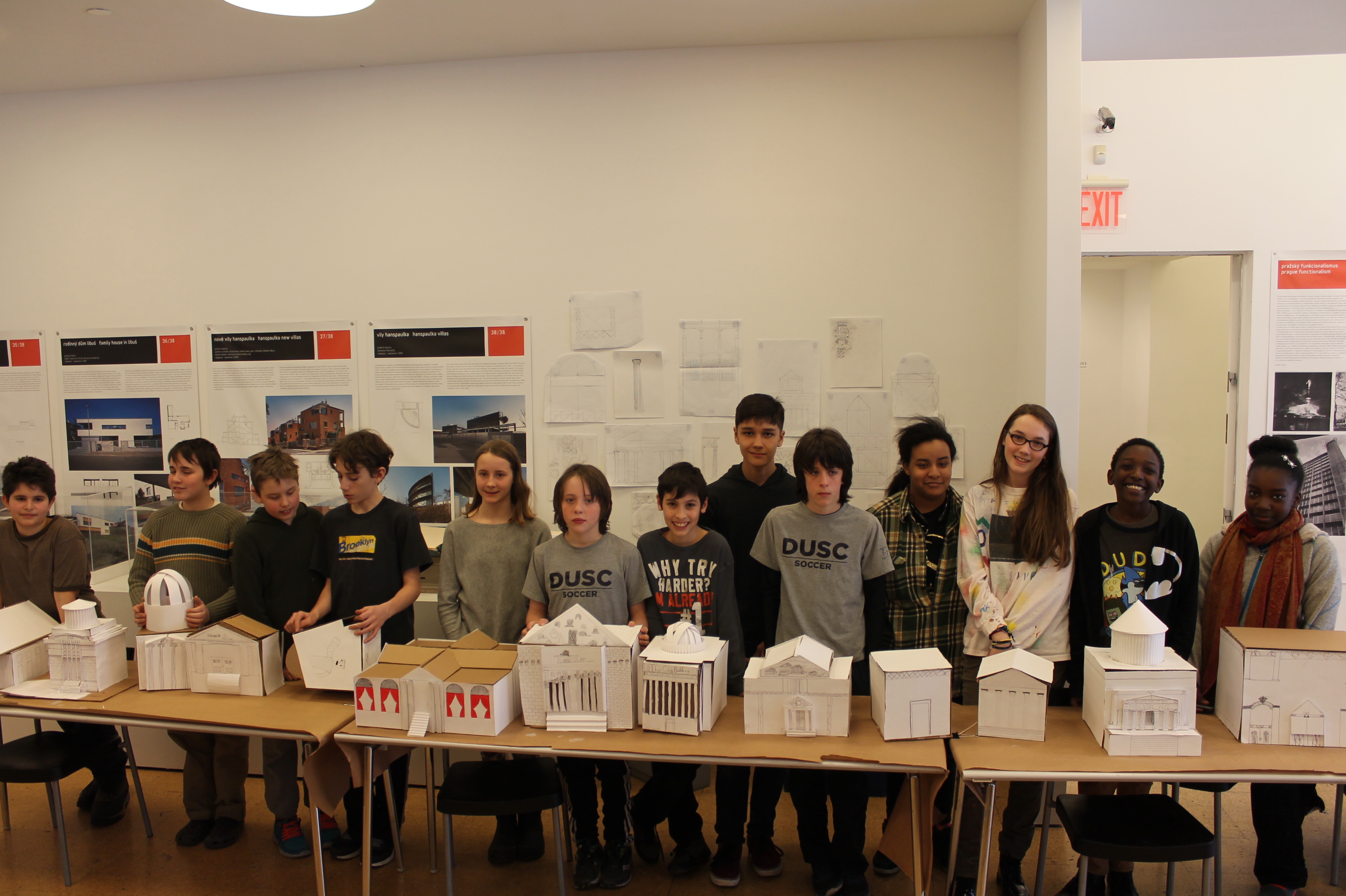by Tim Hayduk
The Center for Architecture has partnered for the past five years with a local group of home-school families to provide them with a location for hands-on, project-based learning while building a small community of learners. Thirty-two students were divided between 3rd- through 5th-grade students and the older 6th- through 8th-grade to focus on Greek and Roman architecture. Both groups explored the origins and history of classical buildings to create age-appropriate final projects.
The younger group began its study by learning about the structural achievements of the Greeks and Romans, testing the strength of columns, beams, arches, vaults, and domes. The program continued with students participating in the hands-on exploration of classical architecture by learning about Doric, Ionic, and Corinthian orders, and building a model of the column including its base, shaft, and capital. Students also learned about the evolution of building types in the Classical period, and built models of temples following a process that approximated the traditional construction of hypostyle buildings – the stone-upon-stone method of building columns and walls, and the limits of stone lintels and spanning capabilities in ancient buildings.
The older group focused on how Classical architecture influenced Neoclassical architecture in New York City. Design Educator Andrea Merritt set the bar high, as students used their newly-acquired knowledge of Classicism and applied it to buildings with more modern functions. The model-making project also demanded a higher degree of craft and persistence of vision in making.
The Center for Architecture’s education programs help young and uninitiated audiences experience architecture and the built environment, fostering an appreciation of the world around us. “Reading” buildings and understanding the language of Classical structures connects the home-school audience with stories, symbols, and a visual language that have circled and transformed the world in profound ways over several thousand years. As urban life takes place in and around buildings, our young audiences gain a deeper understanding of and connection to local history. Early engagement with the built environment will raise the design IQ of the next generation.

